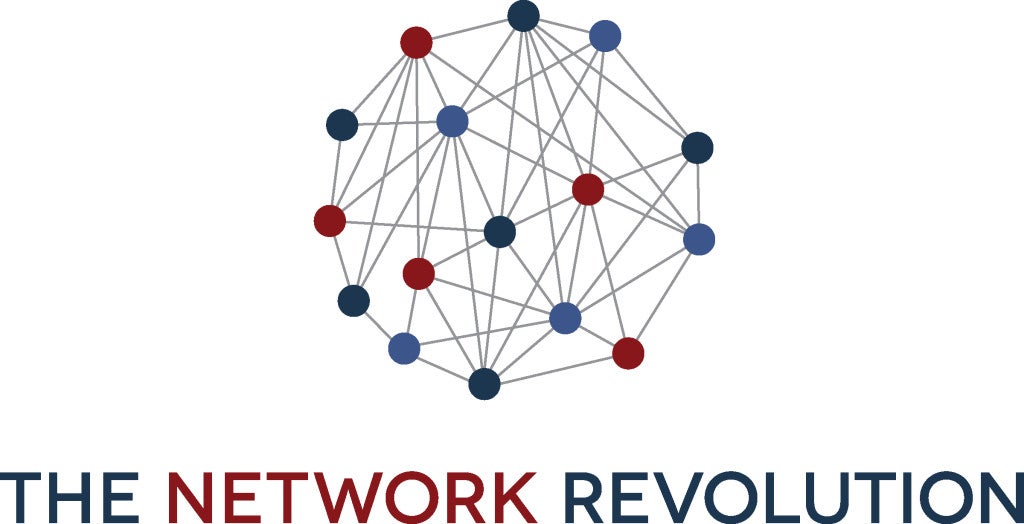
The U.S. health care system, with its brick and mortar, provider-centric business model where doctors dispense face-to-face care during scheduled appointments, is ripe for digital disruption. Although many factors have insulated health care for years, change is coming, if slowly.
Platforms, networks, machine learning and artificial intelligence have enormous potential to solve problems that have plagued the industry for decades, according to the authors of this opinion piece, Barry Libert, CEO of OpenMatters and a senior fellow at Wharton’s SEI Center for Advanced Studies in Management; John C. Grady-Benson, medical director of the Center for Outcomes Research at the Connecticut Joint Replacement Institute; Steve Schutzer, medical director of the Connecticut Joint Replacement Institute and president of the Connecticut Joint Replacement Surgeons; and Megan Beck, OpenMatters’ chief insights officer. The authors would like to thank LiquidHub for sponsoring the research for this series.
* * *
Digital platforms are tools that allow networks of people to come together to connect, share information, and transact with each other. Whether the participants are friends and family, colleagues and mentors, buyers and sellers or doctors and patients, the digital platform allows these networks to interact with each other in ways beyond the physical world to make our lives easier and better. Once established, digital platforms can scale easily. And as they grow, they create increasing value for their participants.
Digital platforms are already disrupting markets broadly. Well-known examples include Airbnb, which is among the most valuable hoteliers but does not own a hotel; Uber, which has become more valuable than Ford and GM but does not manufacture or own a fleet of cars; Facebook, the world’s largest publisher with 1.7 billion writers who also act as editors; and Amazon, which is sailing past Walmart by focusing on e-commerce. These companies focus their investing on digital platforms rather than physical assets, and they use the technology, data and relationships of their networks to create exponentially more value than an analog organization ever could on its own. This ‘network effect’ leads to the emergence of new business and mental models.
The health care industry — specifically medical care — is not impervious to these new business models. It has long been insulated from disruption due to the intricacies of navigating opaque billing systems, the deification of doctors, regulations that suppress competition, and other factors. But now change is coming about. Silicon Valley has been funding a number of startups that are disrupting parts of the industry — and more are likely to come.
Digital Platforms Solve Health Care Problems
Notwithstanding decades of proposed fixes, the health care system today remains woefully fragmented, physician-centric, siloed, disconnected from the holistic needs of patients and in dire financial condition. Consider the following common grievances about health care, and how new digital tools, networks and platforms can address them:
- Doctor visits for commonly treated or chronic conditions still require patients to come to the office, and wait, often for hours, to get seen.
What have we tried? The use of ‘physician extenders’ such as nurse practitioners to lighten doctors’ workloads.
What should we do? Enable patients to access validated and shared health care data and information, followed by convenient interaction with a network of available doctors through online platforms or videoconferencing.
- Systems for coordinating care between multiple physicians treating a patient with a complicated medical condition are inadequate — resulting in duplicative and unnecessary testing, misdiagnoses, and poor health outcomes.
What have we tried? It is up to patients to obtain and share their records with multiple physicians, which wastes time and effort.
What should we do? Create tools to input and store integrated health records across the entire cycle of care, easily accessible to practitioners engaged in a patient’s care, but with privacy safeguards.
- The diagnosis and treatment of many disease states is a complex process. It involves a deep physiological understanding of bodily systems and demands accurate interpretation of a multitude of lab and imaging reports. However, physicians can be constrained by their singular experiences and often make intuitive, non-data-driven medical decisions.
What have we tried? Doctors attempt to keep up with a burgeoning pile of medical literature and then advise patients to seek multiple opinions.
What should we do? Create machine learning and artificial intelligence systems to improve the accuracy of diagnoses and customize treatment, or even create platforms for doctors to crowdsource insight from more experienced peers for challenging cases.
- Preventative care to maintain good health and avoid common lifestyle-related conditions such as obesity, diabetes, and heart disease remains largely an afterthought. Physicians focus on solving medical conditions, not nurturing good health. Many patients only interact with their doctor annually, if that.
What have we tried? Advising patients to change their habits, hoping they do, and checking in next year.
What should we do? Create virtual systems for patients and health care providers that can regularly monitor lifestyle habits and health conditions, intervening when needed. Some Internet of Things devices can capture and send data wirelessly to doctors and hospitals.
The technology needed to implement such solutions is here, and has been for some time. While an upfront investment is often required to create the network, ongoing costs should be dramatically reduced. The system would make the interaction between patient and medical professional more efficient, and could improve outcomes.
“The health care system today remains woefully fragmented, physician-centric, siloed, disconnected from the holistic needs of patients, and in dire financial condition.”
Two hurdles stand in the way of advancements: the recalcitrant mindset of the health care community and the heavy hand of regulations. Despite these limitations, some visionary organizations and startups are making progress.
- Virtual doctor appointments are increasingly being offered. Blue Cross Blue Shield of Massachusetts, for example, has partnered with telemedicine startup AmericanWell to offer patients access to doctors through videoconferencing.
- At-home tools for capturing clinical data will allow doctors to extend the range of conditions that can be treated with virtual consultations. MedWand, for example, is a device that lets doctors remotely measure your heart rate and oxygen levels, and examine your eyes, ears and throat, among others.
- Patients with difficult-to-diagnose conditions can turn to CrowdMed, which uses crowdsourcing to solve tough medical cases.
- The startup Practice Fusion offers cloud-based electronic health records software. This software streamlines processes for doctors and simplifies interactions with networks including pharmacies and labs. It also allows patients to access their health records, results and prescriptions electronically.
- Blockchain technology, originally developed for the finance sector, is entering the health care space as a way to securely communicate sensitive data among a network of parties such as researchers, doctors and patients. Although mostly early stage, a variety of startups are finding novel uses for the blockchain.
As the health care crisis worsens while technology advances, new tools and platforms will emerge that will change our traditional notion of how health care can be delivered. But it won’t be without challenges.
“Two hurdles stand in the way of advancements: the recalcitrant mindset of the health care community and the heavy hand of regulations.”
Regulatory Restrictions
An estimated $1 trillion of the $3.3 trillion that the U.S. spends annually on health care is wasted — presenting an opportunity for disruption by tech startups. However, overcoming the protectionist tendencies of industry incumbents is one thing, dealing with outdated federal regulations is another. These laws include the Copeland Anti-kickback Act (1934), the Stark Law (1990) that bans a physician from doing referrals in which there is a conflict of interest, and the patient privacy HIPAA Act (1996).
Created with noble intentions, these regulations are widely recognized barriers to aligning health care stakeholder relationships with the essential needs of the patients. They also impede digital-based solutions and stifle innovation, and as such need to be replaced with contemporary regulations that protect patient confidentiality while fostering greater flexibility and empowering digital transformation.
An array of additional medical malpractice and litigation concerns fueled by electronic transmissions of health data must also be acknowledged by 21st century regulations. What we cannot do is let these worries halt the adoption of technology that will revolutionize health care.
But who will lead the charge to change the regulatory climate? While health care professionals have deep insight into the implications and practicality of regulation, most prefer not to dive into policy. Unfortunately, this leaves the policy-making to politicians — and probably some entrepreneurs who wish to create space within the regulations for their new enterprises. If established players want to have a role in shaping the future of regulation, the time to step forward is now.
Whoever leads the charge, and we hope they are those with deep health care experience, a new mental model within the health care industry will be essential. Accessible customer-centric health care networks connected by digital platforms will reinvent the patient-doctor relationship, as well as the traditional role of the physician. Indeed, physicians may operate in virtual integrated practice units that will use today’s digital platforms to enable patients direct access to the insights they need. They will become “information analysts” and trusted advisors, using machine learning and artificial intelligence systems to improve patient care.
Instead of being the final authority on treatment plans, physicians may provide options and advise patients to consult with a network of similar patients to determine which plans best fit their goals. This shift away from authority and control may be a difficult pill to swallow, so to speak, for many in health care, but every patient deserves ultimate control over their own health care.


